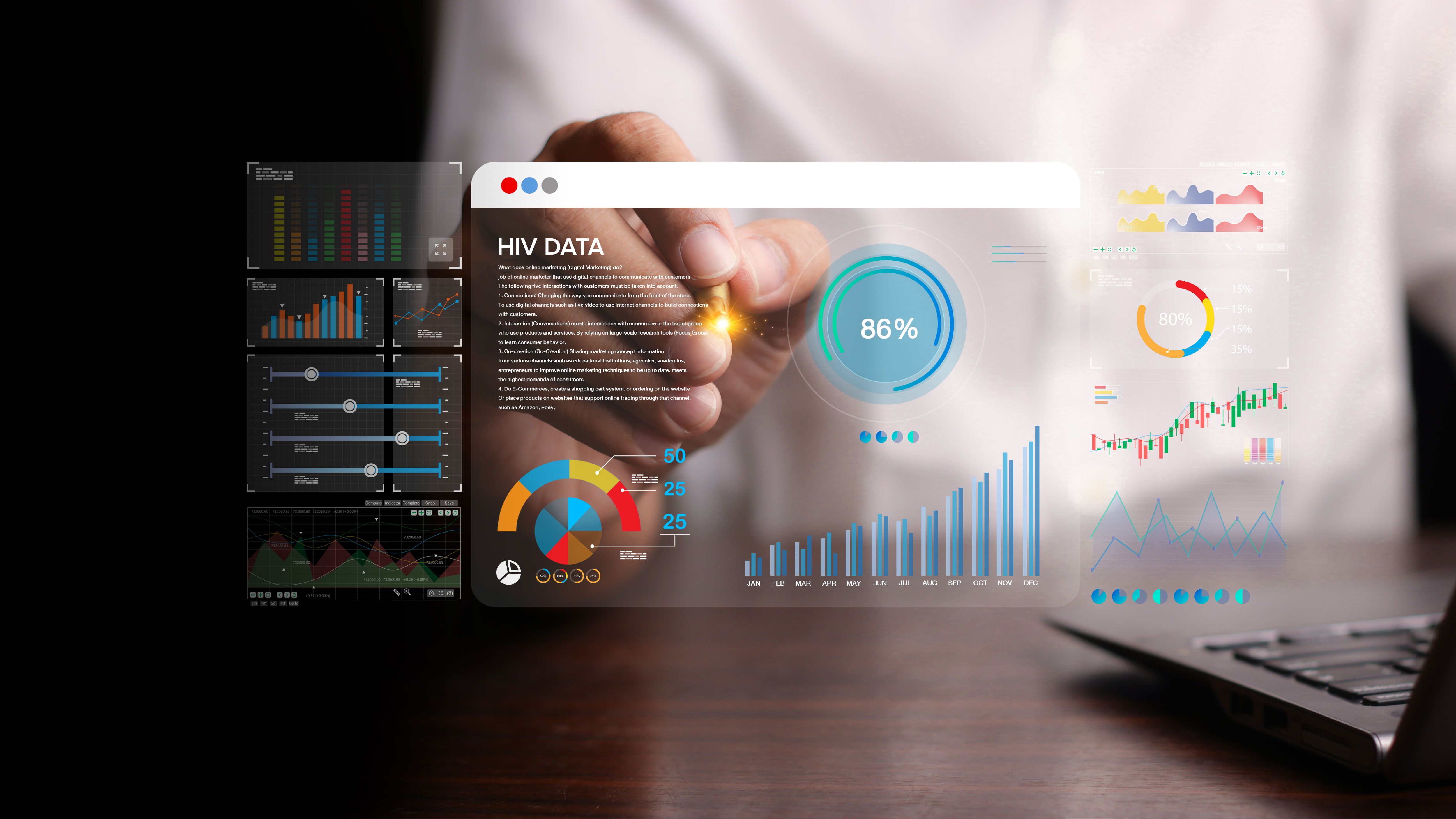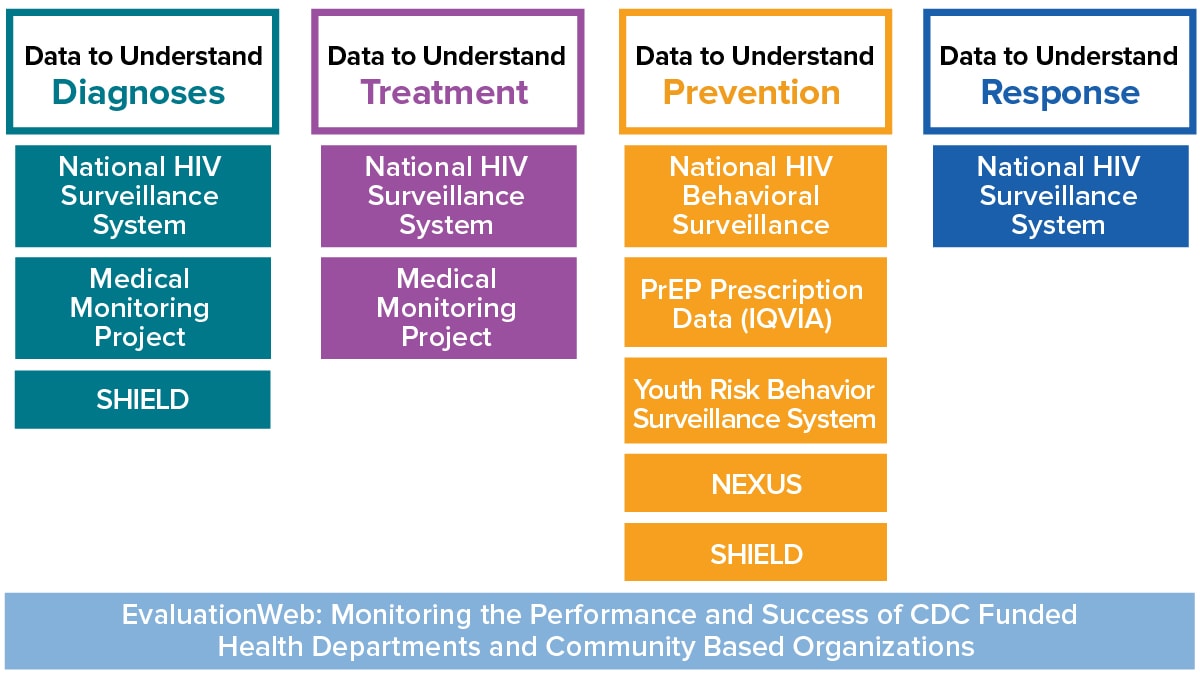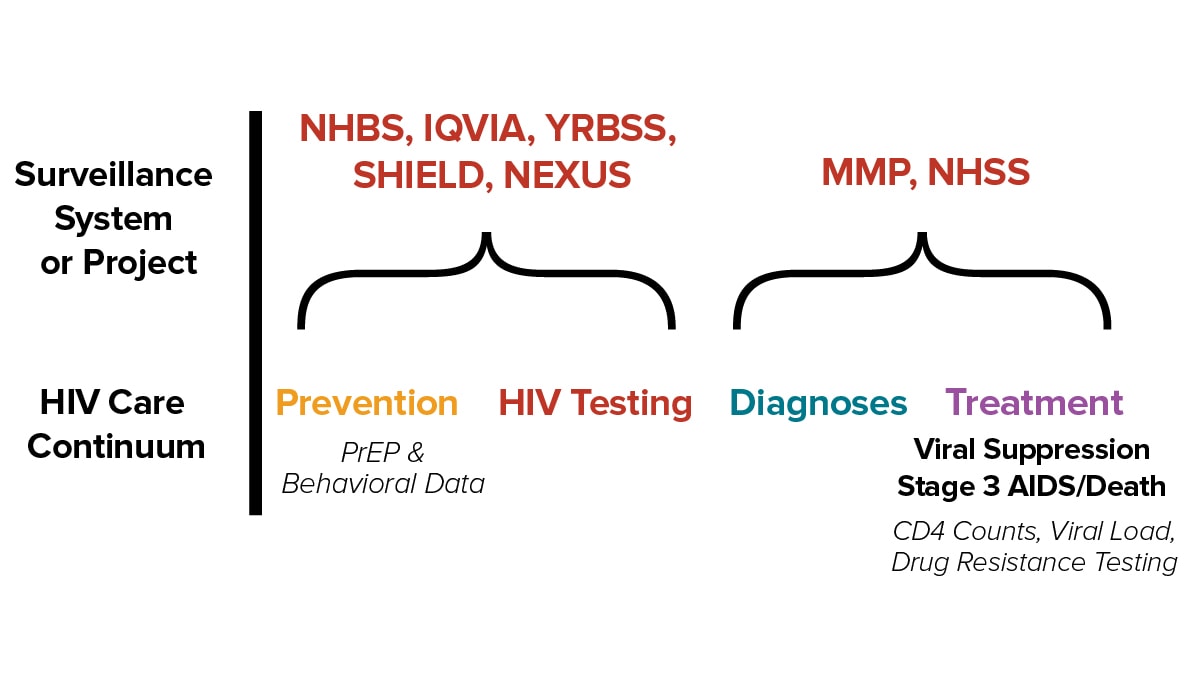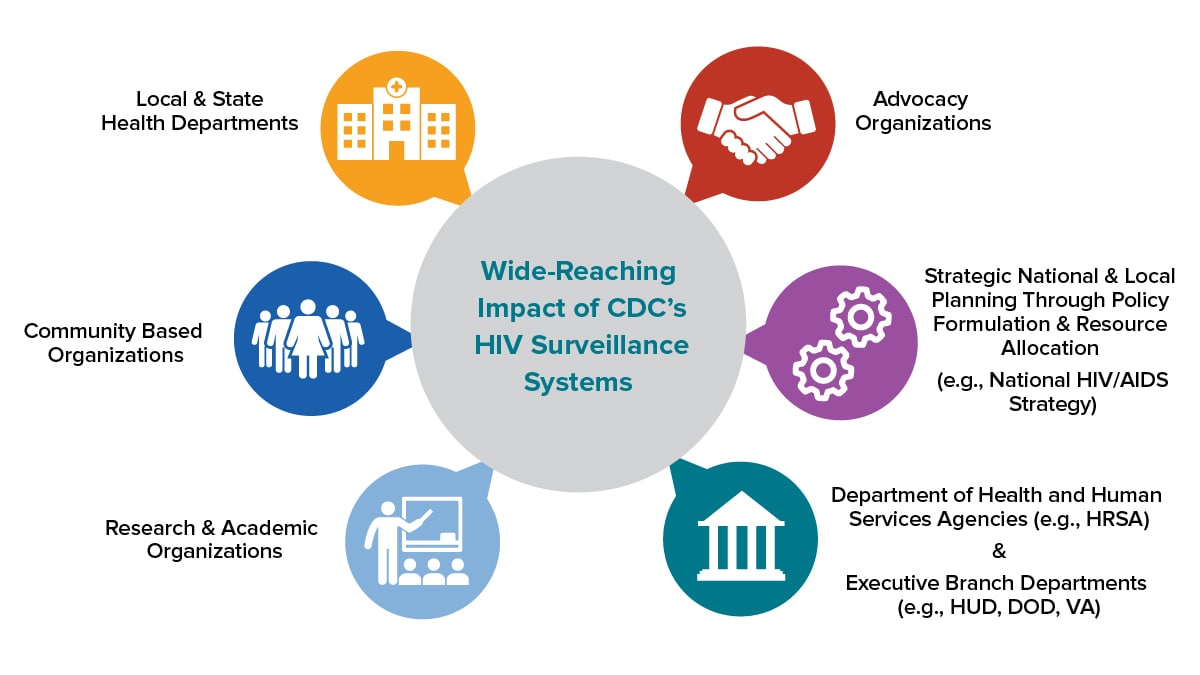At a glance
- CDC uses data from labs, healthcare systems, and surveys to capture information about HIV.
- These data provide a picture of HIV prevention and care efforts in the US.
- Data are used to make decisions about programs, policy, and resources.
- Data are also used to track indicators and identify potential focus populations.

HIV data overview
CDC uses data from public health labs, healthcare systems, and population surveys to capture information about people with, or with risk factors for, HIV. It is through these systems and subsequent analyses that CDC can better understand the distribution of HIV among populations and communities:
- People with risk factors for acquiring HIV
- People with diagnosed HIV
- People with undiagnosed HIV
- People with HIV who receive care and treatment and have viral suppression
- People with HIV who are not in care or receiving treatment and need to be re-engaged
- Communities affected by rapid HIV transmission
- Communities in need of HIV prevention and services
National HIV data systems and projects

Data systems
- National HIV Surveillance System (NHSS): NHSS is the primary source of HIV data for monitoring cases of HIV infection in the United States and 6 US territories and freely associated states. Health departments have the legal authority to collect data reported by laboratory and healthcare providers and report the data to CDC without personal identifiers. NHSS data are used by public health partners nationwide to understand trends in HIV diagnosis, stage of disease, HIV care outcomes, health disparities, social determinants of health (SDOH), and mortality; to identify risk factors and priority populations and communities; and strategically plan and determine program needs. These data are also used locally and at the federal level to detect and respond to rapid transmission of HIV and to help identify persons with HIV and persons who are in need of HIV prevention and care services such as PrEP, HIV care and social services.
- National HIV Behavioral Surveillance (NHBS): NHBS collects information on HIV-associated behaviors and outcomes using interviews and testing from populations disproportionately affected by HIV in major US cities. Populations include gay, bisexual, and other men who have sex with men, transgender women, people who inject drugs, and heterosexually active persons at increased risk for HIV infection. This information allows health departments to improve HIV prevention programs through information on sexual behavior, drug use, pre-exposure prophylaxis (PrEP) use, syringe sharing, HIV awareness, and use of prevention services in these populations.
- Medical Monitoring Project (MMP): MMP is designed to capture information on characteristics, experiences, and needs of people with HIV to guide and support local and national HIV prevention programs. Through interviews and medical record abstractions, MMP provides the only nationally reported data on medical care for people with HIV and collects data on social determinants of health, medical encounters, diagnoses, laboratory results, hospitalizations, and medications, including anti-retroviral treatment.
Other contributing data sources
- Youth Risk Behavior Surveillance System (YRBSS): YRBSS is a series of school-based surveys measuring adolescent health risk behaviors and experiences, including sexual behaviors related to HIV infection. It reports on risks that contribute to the leading causes of death and disability among youth and young adults and is an important resource to inform HIV prevention programs.
- IQVIA Real World Data: IQVIA is a longitudinal prescriptions database of >90% of all prescriptions dispensed by retail pharmacies and 60%-86% dispensed by mail order outlets in the United States. CDC analyzes quarterly data received from IQVIA to estimate the number of US prescriptions for pre-exposure prophylaxis (PrEP), postexposure prophylaxis (PEP), and other HIV treatment drugs.
- Surveillance of HIV-related service barriers among Individuals with Early or Late HIV Diagnoses (SHIELD): SHIELD is a collaboration with four US health departments to interview persons with new HIV diagnoses at Stage 0 or Stage 3. SHIELD aims to improve the ability of CDC and its public health partners to provide insight into individual- and system-level barriers that prevent people from fully realizing the benefits of current HIV prevention and testing interventions.
- The Needle Exchange Utilization Survey (NEXUS): NEXUS, formerly The Injection Drug Use Surveillance Project, conducts bio-behavioral surveillance in syringe services programs (SSPs) among people who inject drugs (PWID) who are clients of SSPs and their associates who use drugs. Data from this system are used to inform planning and evaluation of prevention programs that aim to reduce injection-related adverse health outcomes, to calculate population size estimates of PWID in a community, to address social determinants of health related to injection drug use, and to establish an ongoing surveillance system of injection drug use and associated risks.
Surveillance systems/projects and how they impact the HIV care continuum

Data impact
Data captured from surveillance activities directly inform research, data dashboards and programmatic activities conducted by entities such as National Institutes of Health (NIH), academic partners, Health Resources and Services Administration (HRSA), and non-governmental institutions.

Technical notes
For the most up-to-date technical notes for HIV surveillance and monitoring, see the Technical Notes in the NCHHSTP Atlas Plus.
